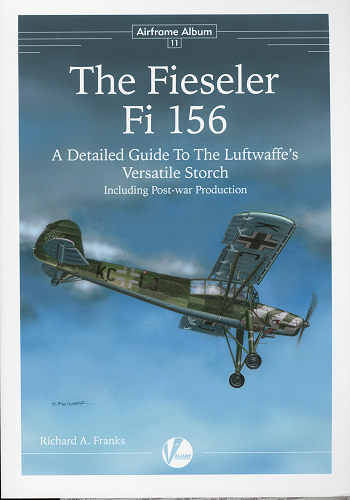 It
is a delight to see another in the Airframe Album series from Valiant Wings.
This release is an aircraft that was found on every front in which the Germans
fought during WWII and one that lasted well into the post war years.
It
is a delight to see another in the Airframe Album series from Valiant Wings.
This release is an aircraft that was found on every front in which the Germans
fought during WWII and one that lasted well into the post war years. |
Author: |
Richard A Franks |
|
Publisher/Distributor |
Valiant Wings Publishing |
|
Price |
£17.95 MSRP at www.valiant-wings.co.uk |
|
Reviewer: |
|
| Notes: |
128 pages, A4 Format, softcover,
ISBN: 978-0-9935345-6-0, Airframe Album #11 |
 It
is a delight to see another in the Airframe Album series from Valiant Wings.
This release is an aircraft that was found on every front in which the Germans
fought during WWII and one that lasted well into the post war years.
It
is a delight to see another in the Airframe Album series from Valiant Wings.
This release is an aircraft that was found on every front in which the Germans
fought during WWII and one that lasted well into the post war years.
The Fi-156 Storch was designed to be a light utility and observation aircraft that could also be used as an air ambulance with limited photo recon capabilities. Thanks to its innovative design, the Fi-156 had a very short take off and landing footprint, making it superbly adapted to operations near the front lines. Able to carry a pilot and passenger in normal operations, as an air ambulance it could carry a stretcher patient and medic or two stretcher patients. It was an aircraft that was often used by field commanders to travel about the front lines and even Dwight Eisenhower used a captured version after D-day.
The aircraft was not only built in Germany but also in Sweden, France and Czechoslovakia, ensuring that the type would be around for many years after the war. The French adapted the airframe to carry radial engines when the supply of inline air cooled engines was no longer available. Thanks to this long life, there are many still flying and in various museums.
In line with others in the series, the author tells the complete story of the type, including its operational use. It also covers the French developments post war and the influence it had on a similar Japanese aircraft, the Ki-76 'Stella'. There is also a great section that covers all the prototypes and uses drawings to show the differences. All known info on these planes is provided and that includes the upgraded Fi-256, which never saw production due to the changing needs of the Luftwaffe. Because of the goodly number of extant airframes and use of period shop manuals, we are able to get a good look at the various components and systems of the aircraft. Not to be left out, there are a plethora of superb full color profiles and lot of period photos, some of which I've never seen. I found the camouflage and markings section to be considerably more extensive than the norm. This is due to the wide range of nations who flew the type both during and after the war.
A staple of the series is a modeler's section that includes builds of the aircraft. There are two superb 1/72 builds using the Heller and Academy kits. The builder of these does a lot of additional work to produce some really quality models. For 1/48 we get a nice build of the Tamiya kit. This one is pretty well out of the box. Interestingly, there is no 1/35 or 1/32 build, ostensibly due to the inability to locate a proper kit. A complete listing of kits, decals, accessories and books is also provided.
This makes for a most complete source book for the modeler and one that enthusiasts of the type will find useful as well. I'll probably sound like a broken record, but I highly recommend this volume as well as all others in this series. It is a joy to read a well done book and the folks at Valiant Wings have produced nothing but well done books.
March 2017
Copyright ModelingMadness.com. All rights reserved.
For more on Valiant Wings, including getting this book, visit www.valiant-wings.co.uk. Thank you for the review copy.
If you would like your product reviewed fairly and quickly, please contact me or see other details in the Note to Contributors.